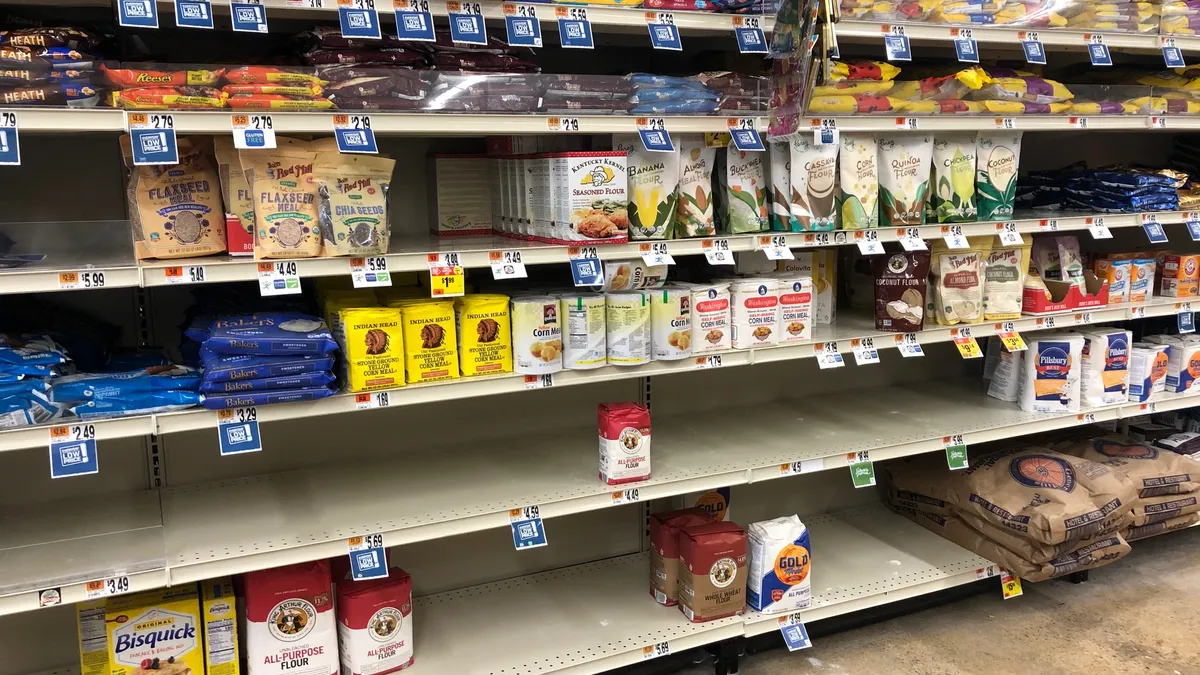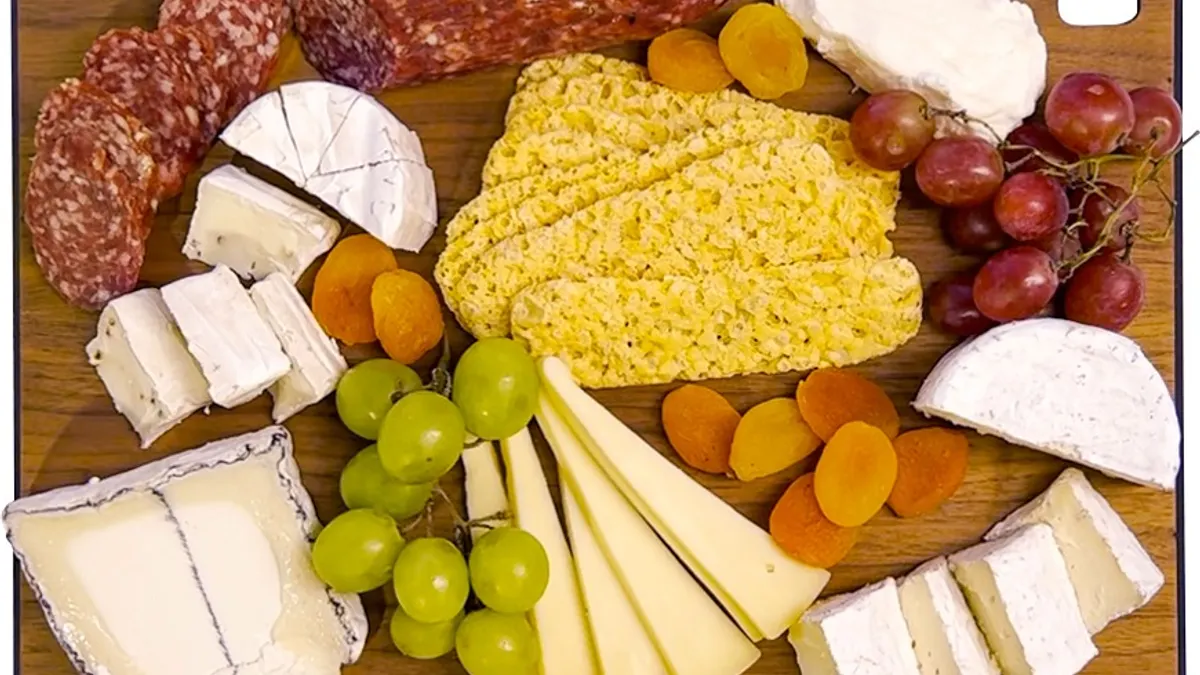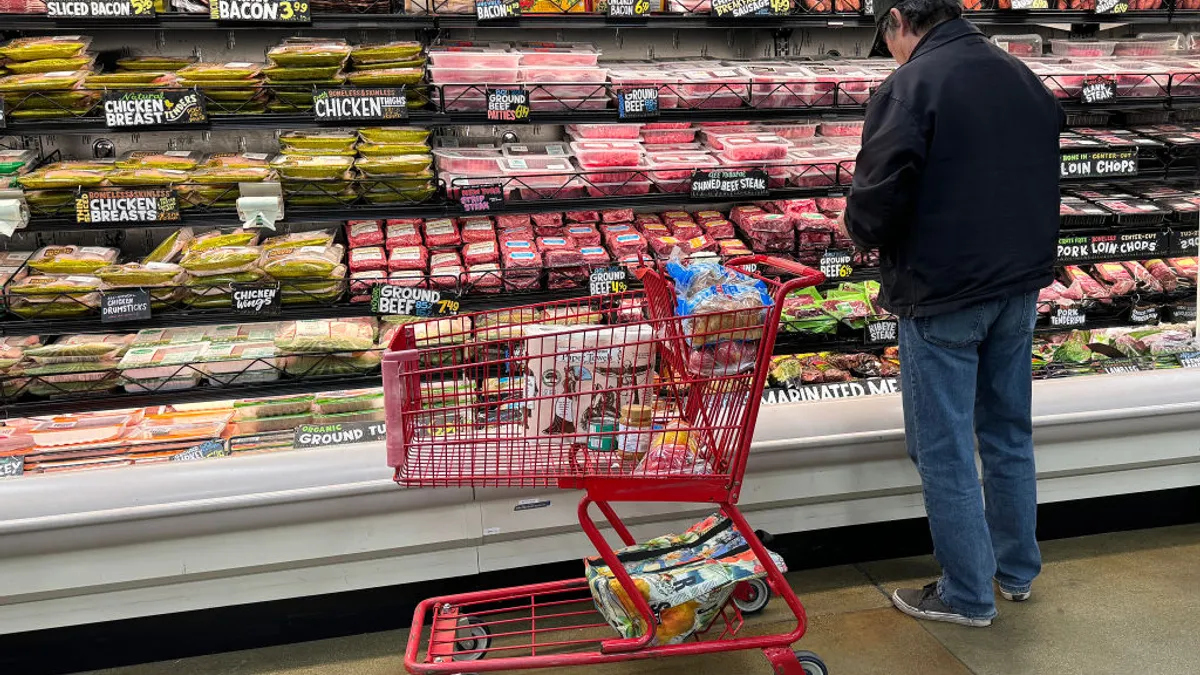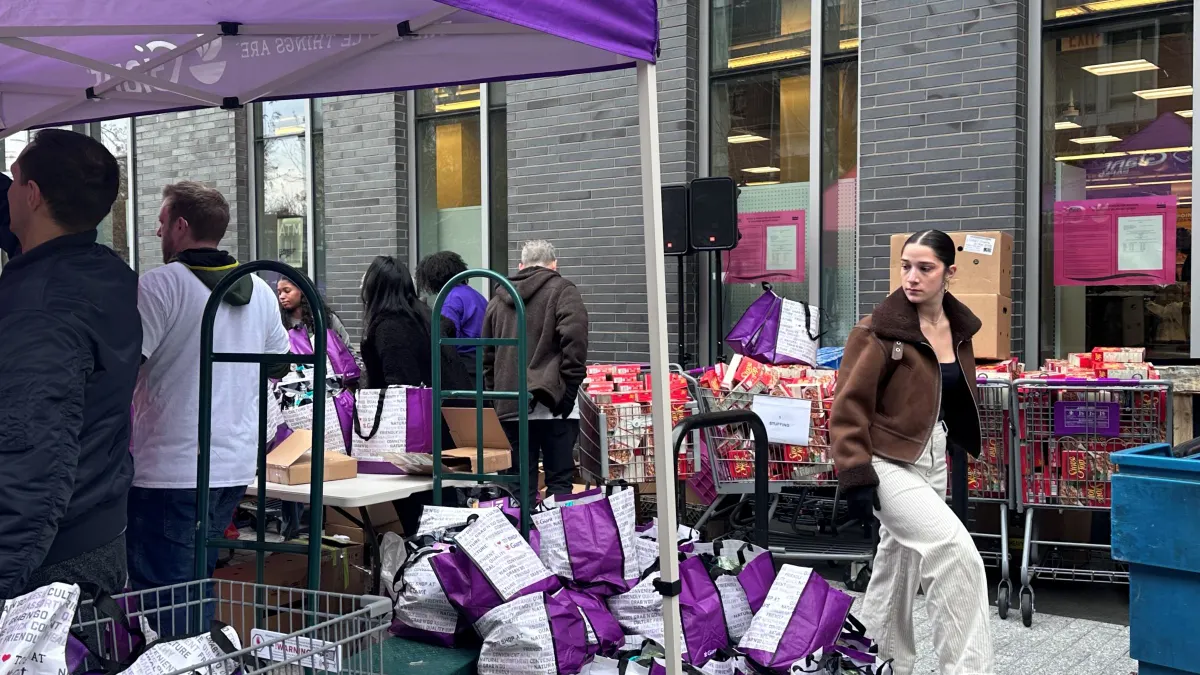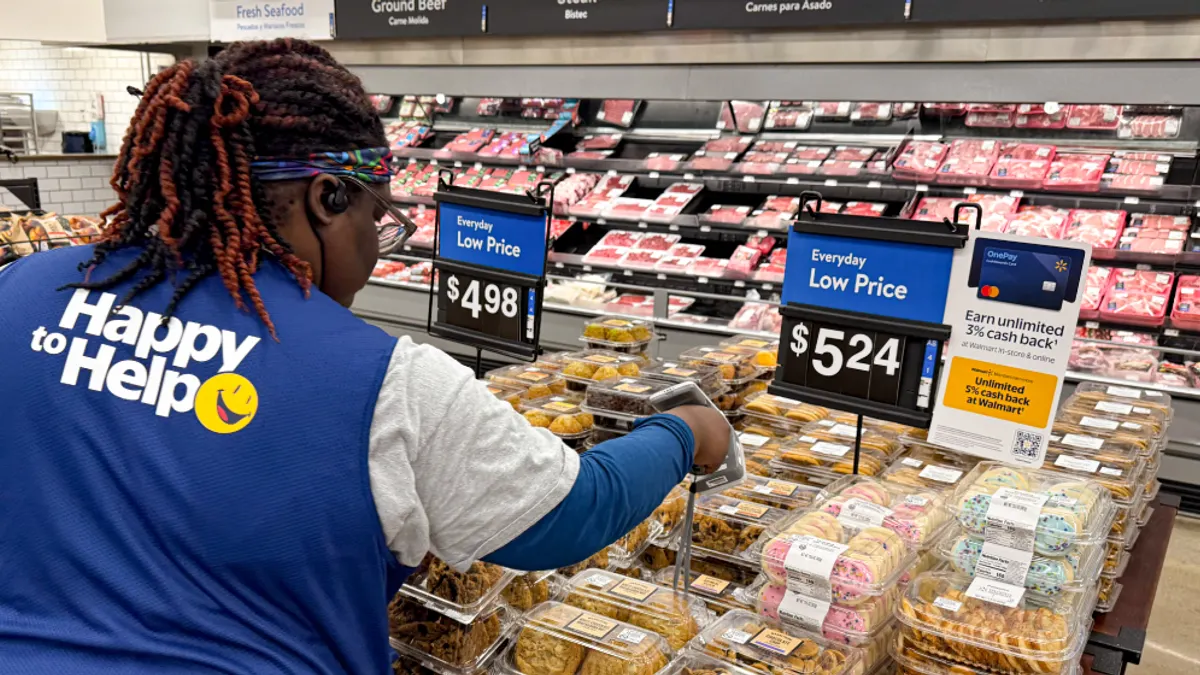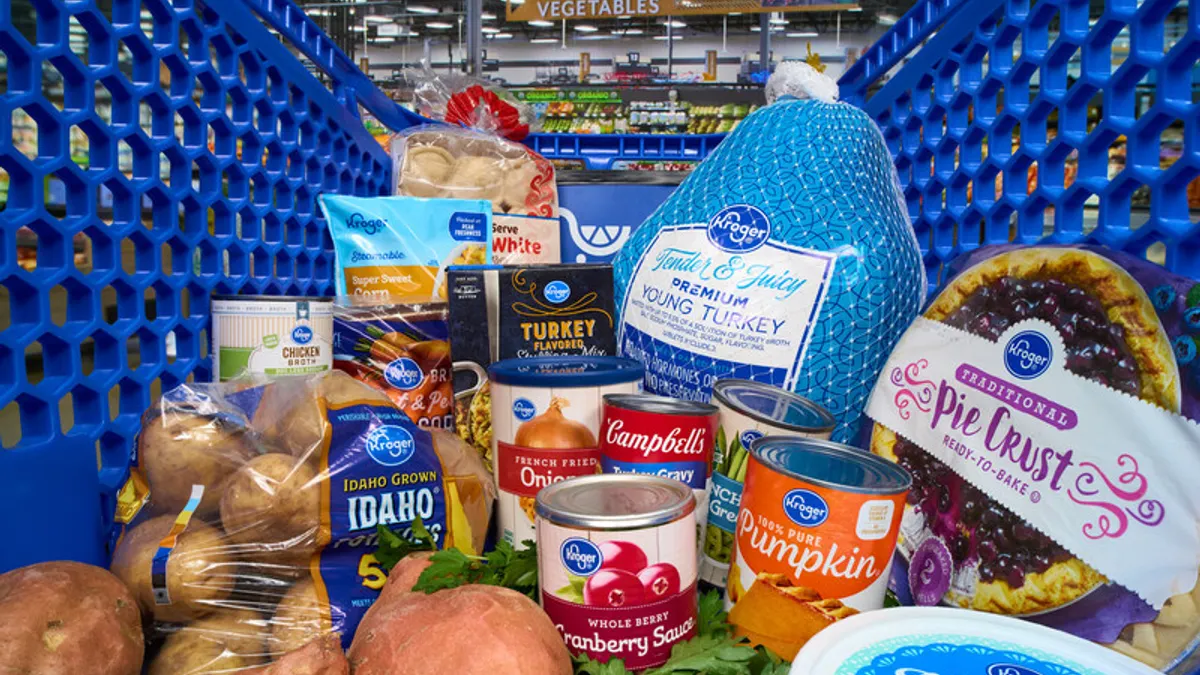Pardon the Disruption is a column that looks at the forces shaping food retail.
Grocers and suppliers have been through the ringer over the past few months battling supply chain strains that have left shelves empty, shoppers frustrated and companies unable to predict with any sort of certainty what items they’ll have in stock from one week to the next.
Merchandising their way around shortages has been difficult, and research is showing that supply chain woes along with rising inflation are pushing shoppers into alternative stores. But smart, proactive companies are using this opportunity to take a sober look at the ways they do business and consider how they might adjust their strategies long term.
One of the most salient lessons companies seem to be learning is that they don’t need to stuff quite so many different types of products on their shelves. Insiders around the industry have told me over the years that grocery stores are over-SKU’d. It’s the product of decades spent chasing after the latest consumer trends, of overzealous product managers, an overreliance on trade dollars to fuel the business and the irrational fear that a shopper will flee their local grocer if they can’t find that one type of frozen pizza they like.
As manufacturers have pared back their supply capabilities in recent months, grocers have had to follow suit, in some cases cutting back to half their normal selections in categories like pasta sauce, bread, crackers and cereal.
This could really sting supermarkets that have built up an abundance of choices over the decades. But consumers haven’t gone running for the hills. At Karns Food Stores in Pennsylvania, shoppers have been unfazed by the limited assortments the company has had to put forth in categories like salad dressings and pasta sauces in recent months, CEO Scott Karns told me recently.
Karns said he's long believed grocers carry too many different flavors, sizes and offshoots of various product brands. He said his management team is taking a hard look at categories like detergent, which features more varieties than people actually buy. He also brought up Hidden Valley Ranch, the popular salad dressing that's expanded its bottle and flavor selections over the years.
“How many sizes does a consumer really need when most of the sales are all in 16 and 24 ounces of an item like that?" he said. "I think that the industry is going to change coming out of COVID and they're not going to have nearly as many SKUs out there that they have had."
Heinen’s, the highly respected independent grocer based in northeast Ohio, has also seen that less can be more in some areas. Early in the pandemic, it closed down its salad bars and switched over to packaged salads that helped it recoup a significant percentage of sales in the category, said Chris Foltz, the company's chief innovation officer. Customers still like the custom salad-making experience, though, so the grocer started thinking about ways to bring the salad bar back in a way that could meet that demand but also cut down on the labor costs and product shrink that had weighed down the stations.
Recently, Heinen's piloted a 10-foot salad bar that's half the size of its traditional salad bar and incurs a third of the labor costs. So far, the bars have been a big success, said Foltz, and together with the packaged salad selection account for the vast majority of the sales the traditional salad bars brought in.
"It's really time to rethink some of these things that, traditionally, we wouldn't have rethought," he told me.
During the pandemic, supermarket coffers swelled as people turned to stores for more of their meals. Those habits are waning, however, and sales growth is moderating even as retailers are stuck with the high costs of online shopping. This makes it increasingly important for grocers to focus on profitability.
At the assortment level, this means focusing on their best-performing products and cutting out the ones that aren’t helping lift sales. Grocers have long performed regular audits of their assortments, but this may entail deeper cuts than that.
"It's inevitable that there are going to be fewer aisles and the SKUs on those aisles are going to have to be more productive," John Ross, CEO of IGA, told my colleague Christopher Doering recently.
"I think that the industry is going to change coming out of COVID and they're not going to have nearly as many SKUs out there that they have had."

Scott Karns
CEO, Karns Food Stores
It also pays to have a more streamlined supply chain these days. As the omicron variant has waned, the war in Ukraine is poised to cause further supply chain pressure, and we may see another coronavirus variant come along that upends the intricate supply systems that flow into grocery stores.
An abundance of choice isn’t necessarily what shoppers want, either. There’s the concept, popularized by psychologist Barry Schwartz in his book “Paradox of Choice,” that says offering people too many options overwhelms rather than energizes them. Some of the most successful brands in the business these days, including Trader Joe’s, Costco, Aldi and Gopuff, focus on a limited assortment. They curate their selections, and shoppers love them for it.
Personally speaking, I find the less product clutter I’m confronted with when I shop, the more willing I am to browse and discover new items. When faced with row after row of different selections, I don’t even bother and just go into seek-and-find mode.
What could grocers do without quite so many shelves of products? Plenty. Stores with high online order volumes could carve out space to pick fast-moving products, stage orders and offer services like pickup lockers.
Retailers could also use the space for the merchandising and eateries they’ll need to stay competitive with restaurants. This includes solutions-focused merchandising like meal bundles, prepared foods and even demo stations. It also includes in-store restaurants, ghost kitchens and other next-generation meal stops for consumers.
Some of the latest and most talked-about store formats in grocery today are focused on attractive merchandising and product curation. Dom’s Kitchen & Market in Chicago, which was founded by two veterans of the supermarket chain Mariano’s, operates small stores where prepared foods and demos are situated at the center of the store instead of row after row of products.
In Des Moines, Iowa, and a few other cities, Hy-Vee is opening large stores where food halls, general merchandise displays and digital screens are mixed in with grocery aisles. Walmart, meanwhile, recently opened a store in Arkansas called “Time Well Spent” that offers dynamic merchandising displays and QR codes that encourage exploration — an effort that one expert interviewed by sister publication Retail Dive referred to as “solution-based rather than product-based retailing.”
As online shopping increases, consumers will likely grow increasingly willing to automate the purchasing of staple products for home delivery or pickup and look to stores for solutions-based merchandising. Retailers like Ahold Delhaize and Kroger have launched online marketplaces, while Albertsons recently began offering automated replenishment of certain staple products. The Novastore, a grocery prototype developed by Alert Innovation that's a hybrid automated fulfillment center and physical shopping space, promises a future where consumers only shop for fresh products and have robots fulfill the rest.
Making deep, significant cuts to product assortment is probably a scary idea for grocery retailers. But I don’t think these companies should look at this as an overhaul of the way they do business. They're still offering people choice when they have 12 types of olive oil instead of 24. It’s more about finding that sweet spot of assortment for shoppers and experimenting with limited offerings in certain categories.
It’s also a matter of making stores more attractive places to shop. Grocers sell some of the most sensory-rich products in the entire retail industry. So why hide that fact by continuing to insist on commodity retailing and piling up items like a hardware store? Make space for the meals, product merchandising and other creative ideas that will let the aromas and inspiration flow.


